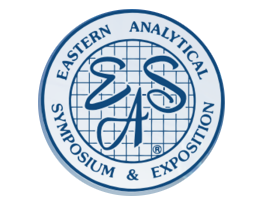 Susan Olesik received her A.S. from Vincennes University B.A. from DePauw University and her Ph.D. from the University of Wisconsin-Madison, under the auspices of James W. Taylor in field of analytical mass spectrometry. She held a postdoctoral fellowship for Milos Novotny at Indiana University followed by a postdoctoral fellow for Tomas Baer at University of North Carolina-Chapel Hill. After that she became a faculty member at The Ohio State University. She is currently the Dow Professor of the Department of Chemistry and Biochemistry. In 1989, she began a science outreach program, Wonders of Our World (WOW) that assists elementary schools by providing exciting hand-on experiments for the students and professional development workshops for the teachers. She continues as the Director of the Ohio House of Science and Engineering (OHSE), a K-16 science outreach center.
Susan Olesik received her A.S. from Vincennes University B.A. from DePauw University and her Ph.D. from the University of Wisconsin-Madison, under the auspices of James W. Taylor in field of analytical mass spectrometry. She held a postdoctoral fellowship for Milos Novotny at Indiana University followed by a postdoctoral fellow for Tomas Baer at University of North Carolina-Chapel Hill. After that she became a faculty member at The Ohio State University. She is currently the Dow Professor of the Department of Chemistry and Biochemistry. In 1989, she began a science outreach program, Wonders of Our World (WOW) that assists elementary schools by providing exciting hand-on experiments for the students and professional development workshops for the teachers. She continues as the Director of the Ohio House of Science and Engineering (OHSE), a K-16 science outreach center.
Her awards include: 2019 The Analytical Scientist-100 Most Influential Analytical Scientists, 2017 The Analytical Scientist top mentor award, 2016 one of the Top 50 women in Analytical Science, 2015 The Analytical Scientist -100 Most Influential Analytical Scientists, ACS 2014 Helen M Free Award for Public Outreach, 2014 ACS Award in Chromatography, 2012 AAAS Fellow, 2010 OSU Building Bridges Excellence Award, 2009 ACS Fellow, 2008 ACS National Award for Encouraging Disadvantaged Students into Careers in the Chemical Sciences; 2008 Stanley C. Israel Regional Award for Advancing Diversity in the Chemical Sciences; OSU Alumni Association Heinlen Award-2006; 2005 Columbus Technical Council (CTC) Technical Person of the Year; 2004 ACS, Columbus Section Award for Outstanding Achievement & Promotion of Chemical Sciences; 2000 AWISCO Woman in Science Award; and a commendation from NASA for Contributing GC Column to Cassini- Huygen’s probe.
She is most known for research in three areas of separation science — Enhanced-fluidity Liquid Chromatography (EFLC), development of carbon stationary phases (one of these columns was a component of the Cassini-Huygen’s probe of Titan), and design of nanoscale materials for chromatography-mass spectrometry. Recent areas of study include studies of biologically relevant compounds and improving in efficiency in separation science and ionization efficiency in surface assisted laser desorption ionization (SALDI) using nanoparticle and nanofiber arrays and devices.
Abstract: The Fascinating Impact of Nanoscale Structure on Chromatography and Mass Spectral Ionization, Susan Olesik, Brian Fitch, Anpu Wang, The Ohio State University
Chromatographic efficiency improves with the inverse square of the particle size of the chromatographic particle. This is well documented in most theories describing band dispersion in chromatography. As the dimension of the particle decreases the pressure drop across the chromatographic columns is expected to also increase. However, nanostructured materials that are not particle-based but nanofiber-based materials seem to be violating basic flow dynamic principles used in chromatography.
Surface enhanced-laser desorption ionization (SALDI) is an analytical technique that is increasingly used for the analysis of low molecular weight analytes and for species for which the SALDI surface provides unique selectivity. SALDI typically has low ionization efficiency and is limited in the molecular weight range that is detectable.
Using similar nanomaterials improved chromatographic and SALDI mass spectral performance can be accomplished. This presentation will illustrate these strong attributes.
